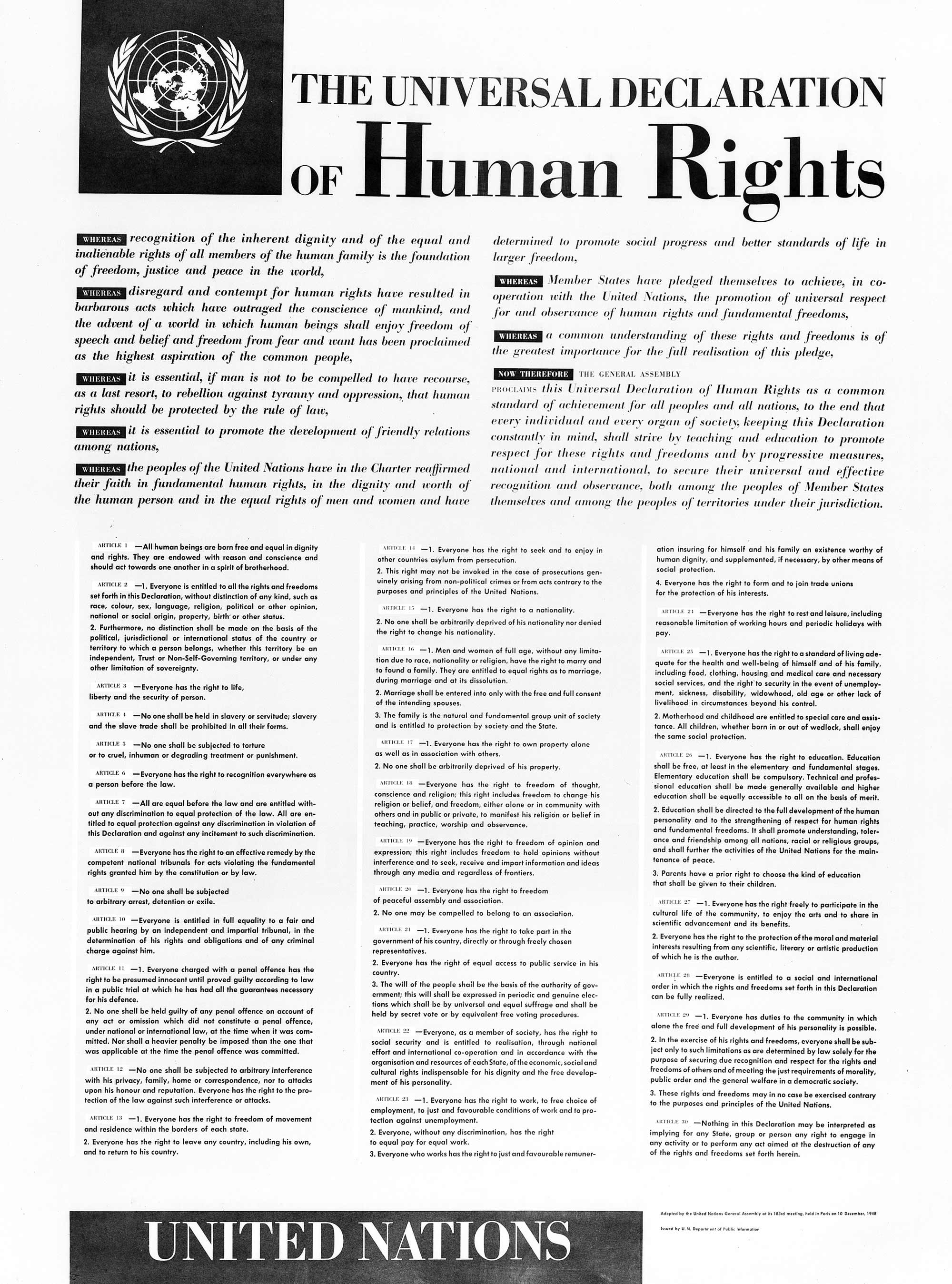Activists from different nationalities and backgrounds work together for two years to devise an unprecedented universal declaration of human rights that will transcend parochial political, religious, cultural. And ideological beliefs in order to clearly define the basic rights of all humankind.
In 1946 an International Commission of Human Rights consisting of eighteen members from various backgrounds was formed within the United Nations under the chairmanship of Eleanor Roosevelt, the former First Lady. Mrs. Roosevelt gave a Canadian law professor, John Peters Humphrey, the daunting task of serving as principal drafter of an international bill of human rights that would prove acceptable to the diverse world body.
Humphrey and his staff pored over previous rights documents created throughout history in order to produce a 408-page report that could guide their work. The French member, Rene Cassin, the used Humphrey’s materials to write the first draft, which he structured after the Code Napoleon.
The subcommittee’s final draft was later discussed by the Commission and presented to the UN General Assembly for its consideration. The vote was held on December 10, 1948, in Paris, where 48 voted in favor, none were opposed, two were absent and eight abstained.
A member of the drafting subcommittee, Hernan Santa Cruz of Chile later recalled: “I perceived that I was participating in a truly significant historic event…there was an atmosphere of genuine solidarity and brotherhood among men and women from all latitudes, the like of which I have not seen again in any international setting.”
The Universal Declaration of Human Rights proclaims: “Everyone is entitled to all the rights and freedoms set forth in this Declaration, without distinction of any kind, such as race, color, sex, language, religion, political or other opinion, national or social origin, property, birth, or other status.” Its thirty articled grant an assortment of basic individual freedoms, to all persons in the world. The Declaration forbids slavery and torture and calls for equal justice under law. Everyone is entitled to education and allowed to freely participate in cultural activities. Specific remedies are provided to combat violations.
Considered the first global expression of human rights, the UN’s Declaration is a milestone document in the history, yet one which is never fully adhered to. The original text is now available from the UN website in 439 different translations. The anniversary of its adoption is commemorated as International Human Rights Day






